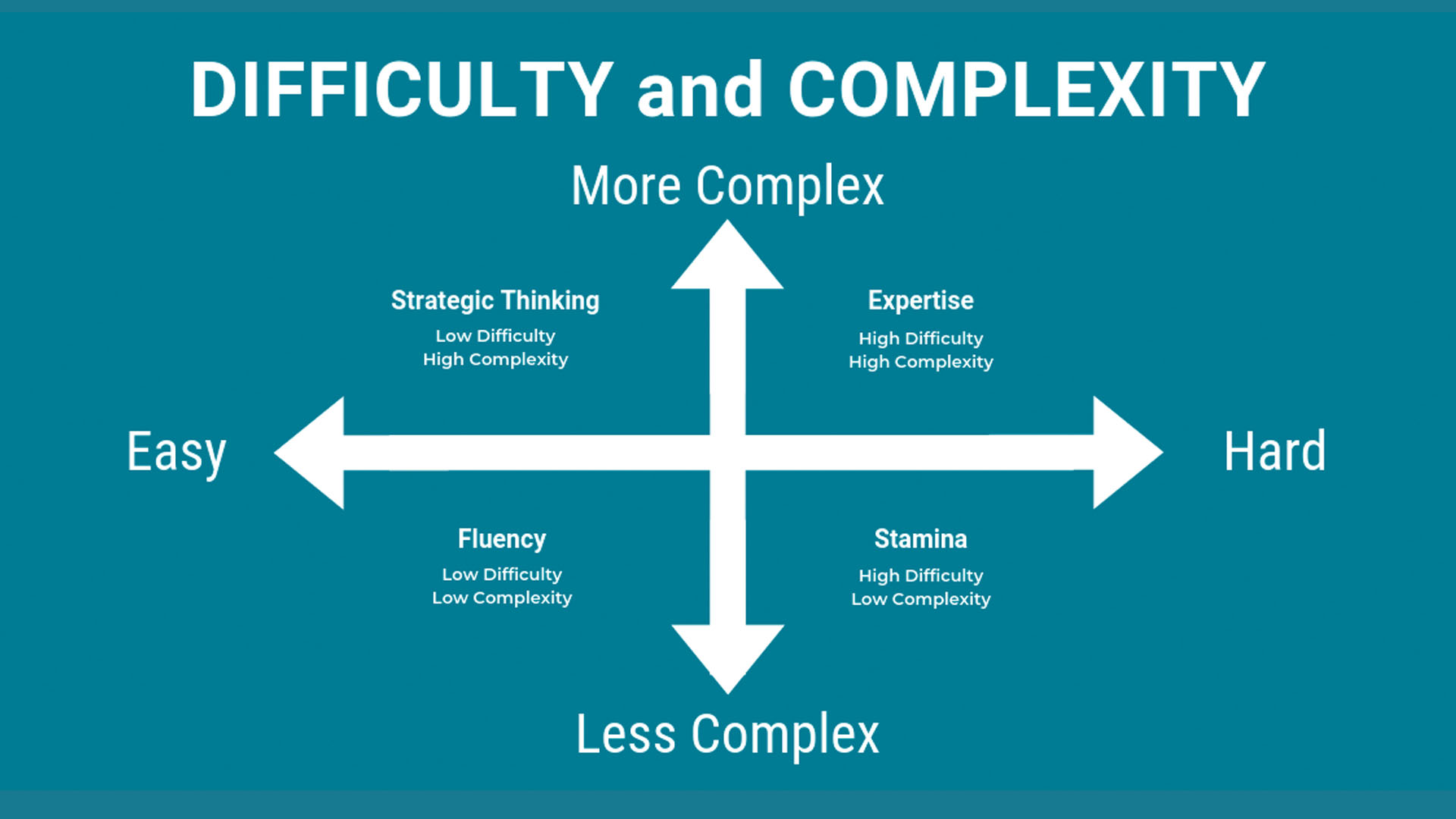As we think about next steps to iLearn, specifically related to math, I believe the key is in selecting tasks for our classroom. Choosing the “right” task can make or break a lesson. Let’s take a look at a John Hattie model that can help us give students productive math tasks when they need to work on problem-solving and procedural problems when that is what is needed. How do we know when to do what?
In the book, Visible Learning for Mathematics, John Hattie defines a difficulty and complexity matrix. Think about a coordinate grid with four quadrants created by a horizontal axis which represents difficulty and a vertical axis which represents complexity. The difficulty is defined by the effort it takes to do a task. It could be the time, steps or effort for a task. Complexity is defined as the thinking or decision-making required for a task. The two axes create four quadrants that represent the relationship between complexity and difficulty.

The first quadrant (lower left) represents Fluency. The Fluency quadrant is where a task has low difficulty (effort) and low complexity (thinking). A fluency task is a task that is done mentally and automatically. The second quadrant is Stamina; this lower right-hand quadrant represents high difficulty (effort) and low complexity (thinking). These tasks would include algorithmic tasks where students are simply replicating a set of procedures. No thinking is required because the procedure is already defined for the students.
The upper half of the quadrants include two categories where complexity is high. Strategic Thinking is the upper left-hand quadrant. This category is defined as low difficulty but high complexity. These tasks require students to make decisions and problem-solve. They are often contextual in nature; however, each task has multiple entry points for the students to use to solve the problem.
The final quadrant is the Expertise tasks. These tasks require high difficulty and high complexity. There are tasks where students are using prior knowledge in a new and unique way. They cannot be solved by using a standard algorithm. They also have multiple entry points students can use to solve them.
In working with educators around the state, I have advised that instruction and classroom assessments should match all four quadrants. When we design a classroom assessment to match the four quadrants, our instruction will follow the four quadrants. We have to be intentional about planning our assessments to match what students will see on iLearn. In fact, each of the quadrants should represent 25% of the points on a given assessment.
By focusing our efforts on first the task, then the instruction, we can build lessons that will not only expand our students’ knowledge of mathematics but also create problem solvers and critical thinkers.
Want more great info? Sign up for our PLConnect Briefing and get tips, tools, and strategies from our in-house experts.
Resources
Please login or register to claim PGPs.
Alternatively, you may use the PGP Request Form if you prefer to not register an account.


